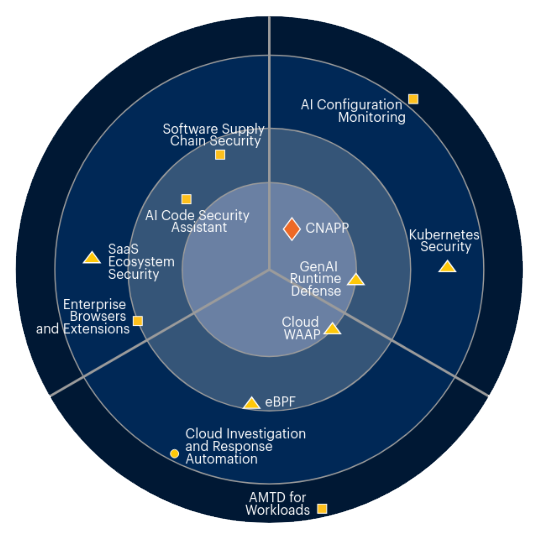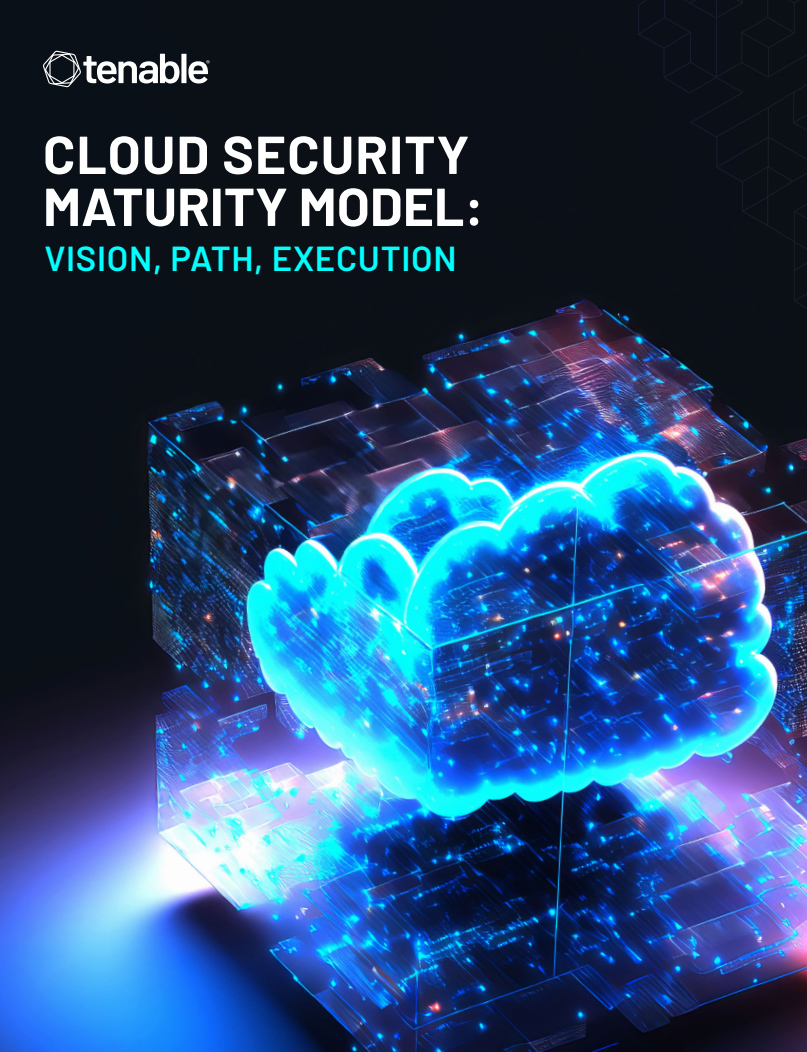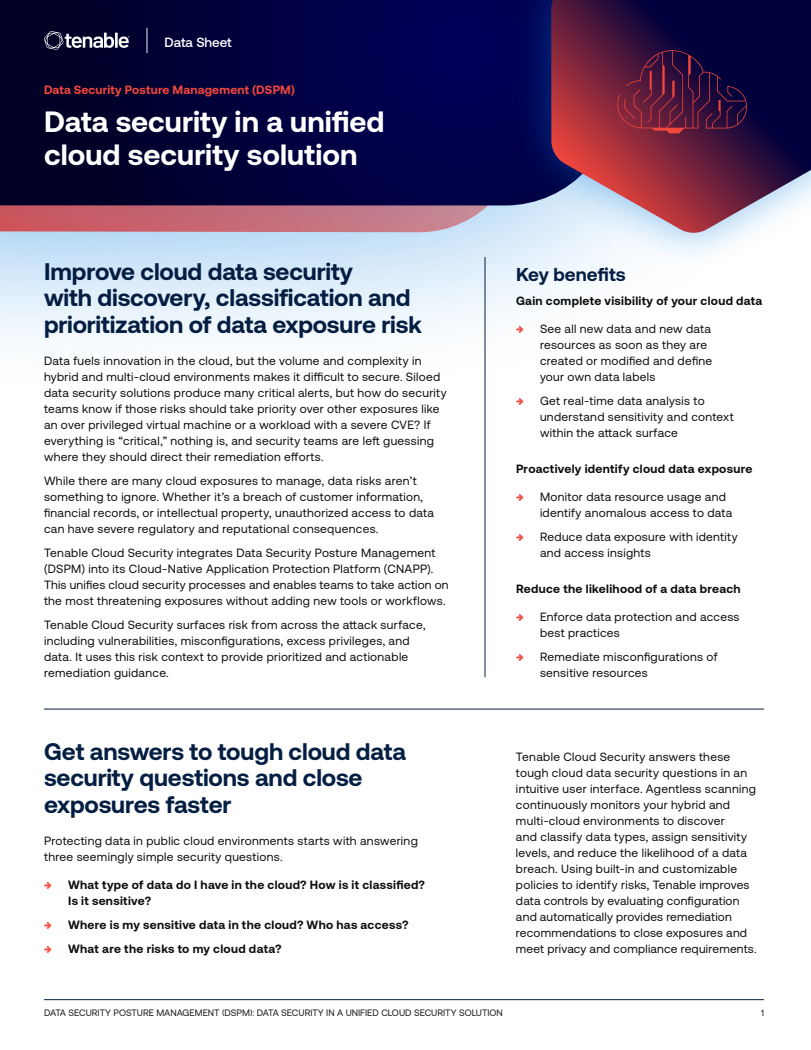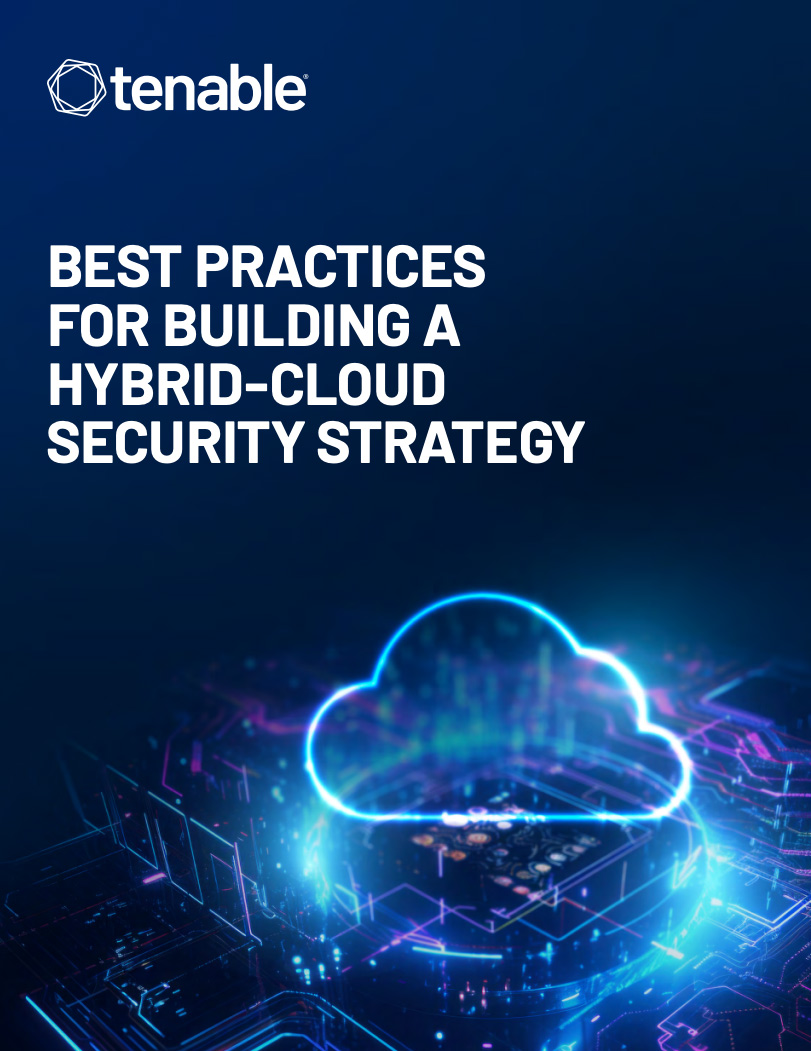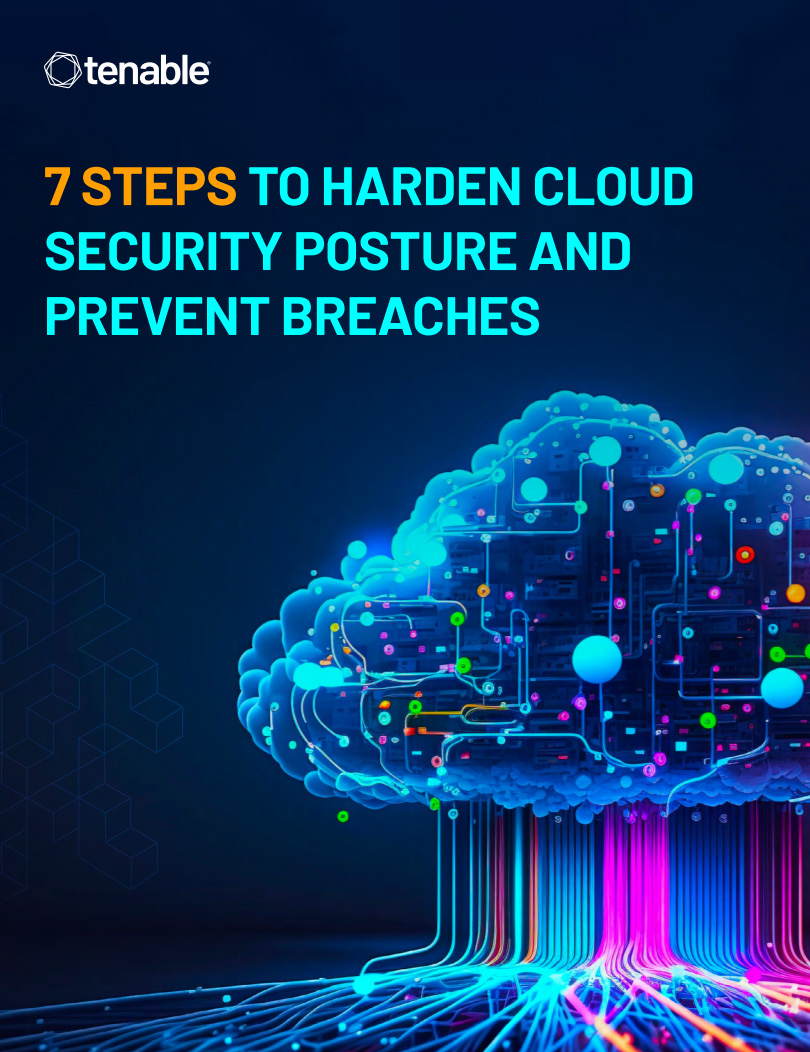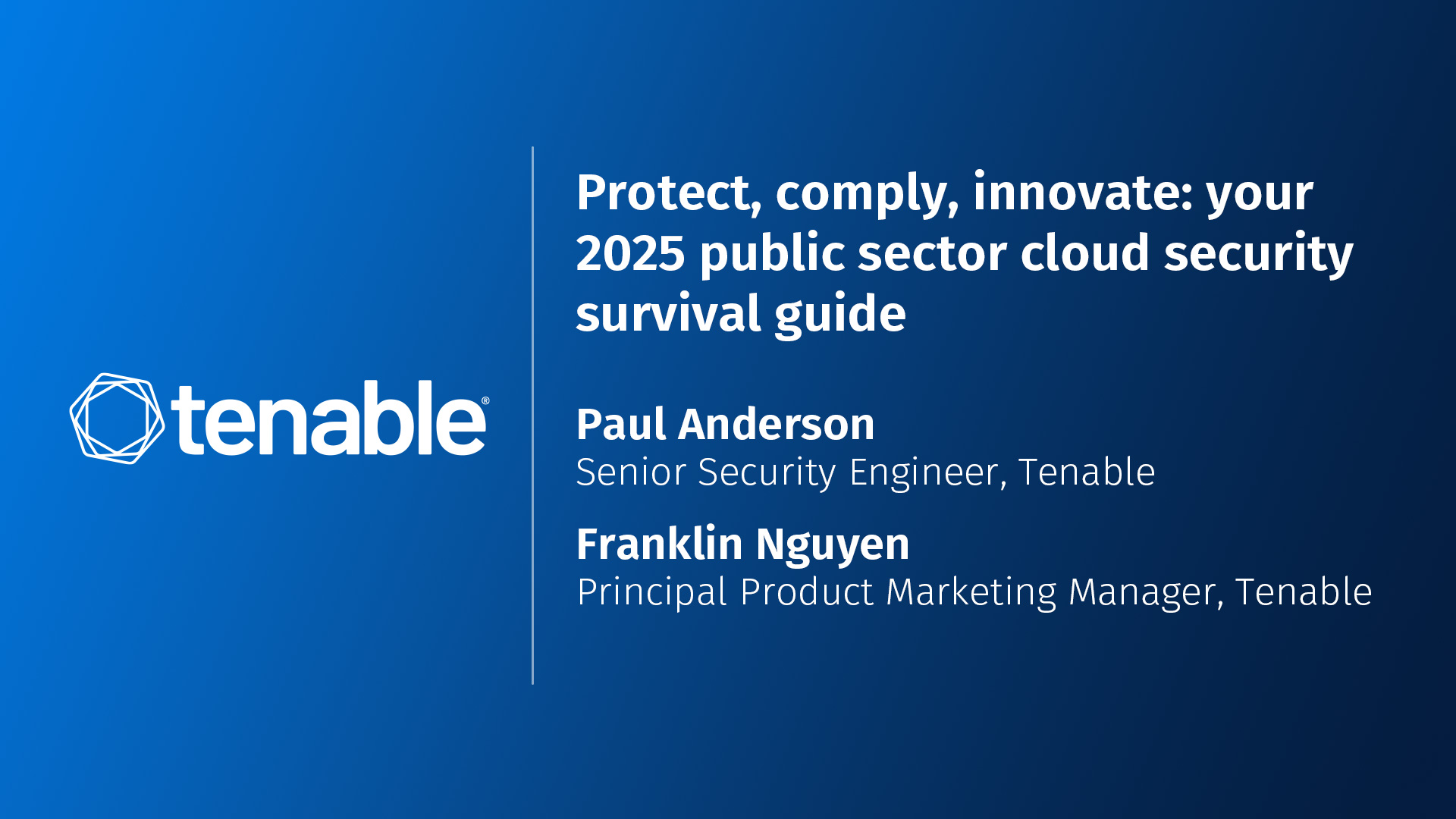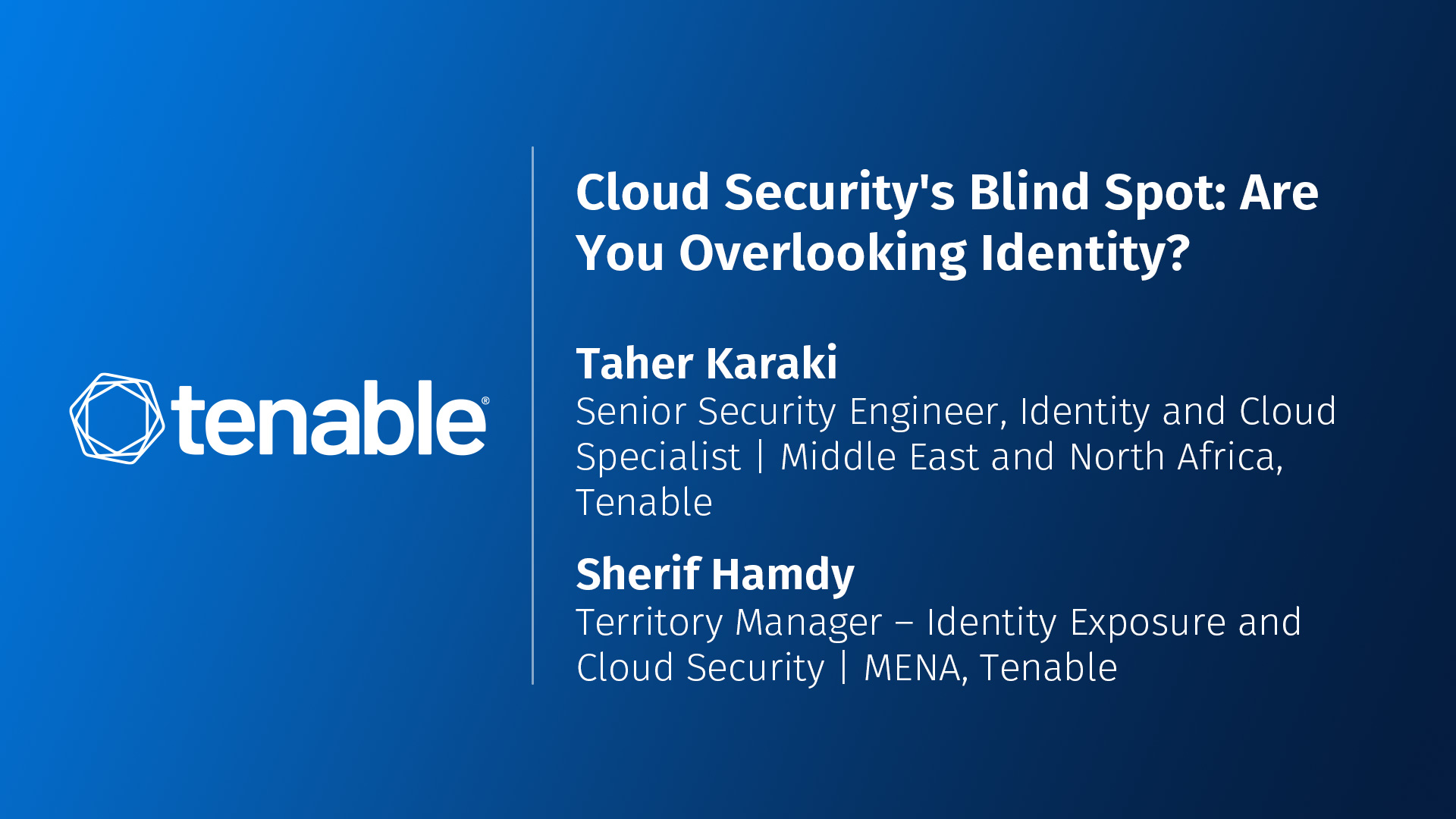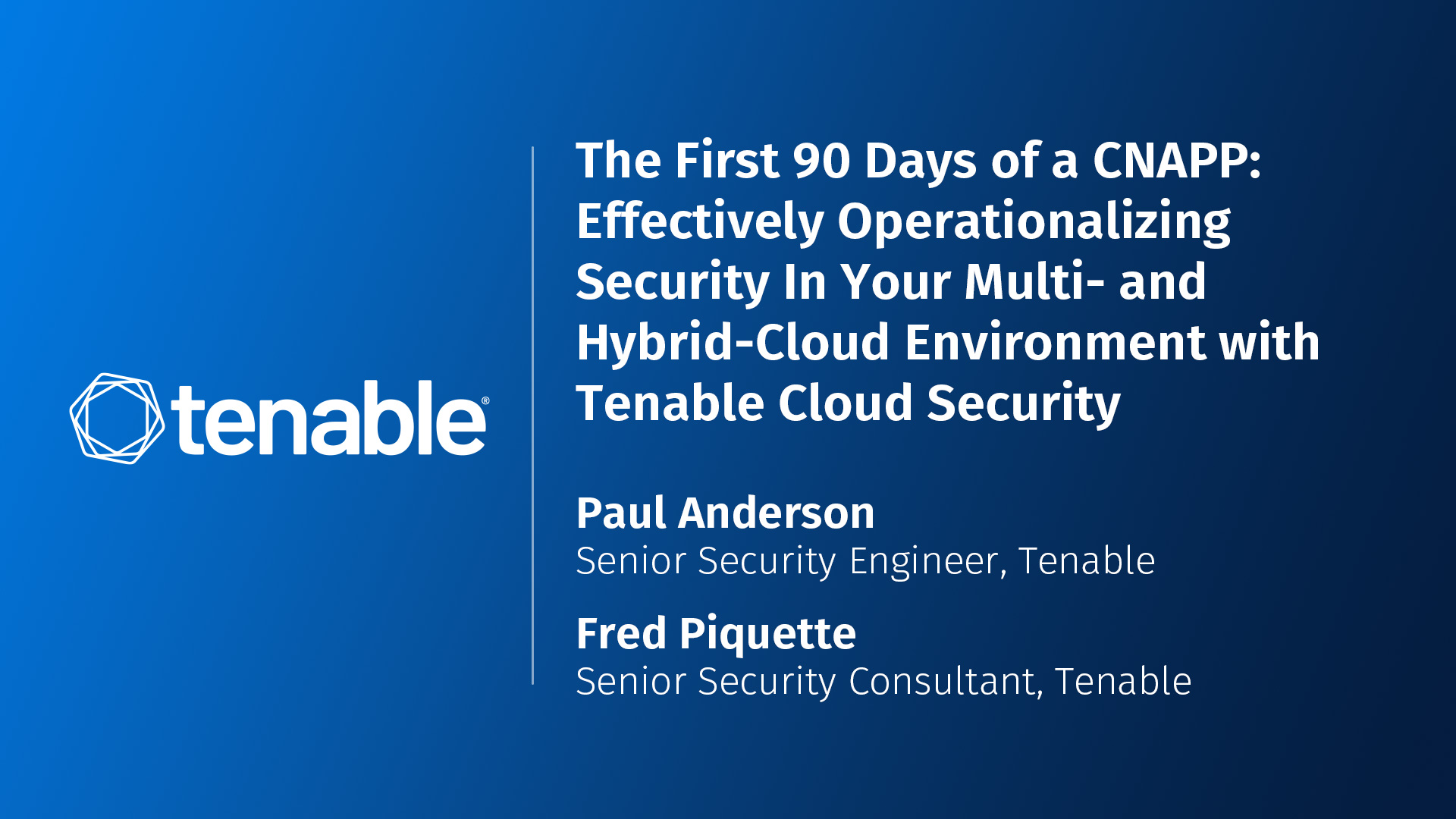Cloud-Sicherheit: Visibility and insight into all of your cloud infrastructure
Cloud security includes processes, tools, resources and policies to continually assess all assets within your cloud environments to discover and remediate vulnerabilities, misconfigurations and other security issues.
It’s an evolving process, but you can strengthen your program by adopting some cloud security best practices.
In this cloud security guide, learn more about:

Cloud security and emerging tech
CNAPP solutions are evolving to address new needs, including securing AI services and cloud-specific data.
Mehr erfahrenData security posture management in cloud security
By unifying security processes, DSPM can help cloud security teams focus on critical cloud risks without additional tools or workflows.
Mehr erfahrenTenable Community for cloud security
Connect with cloud security practitioners to ask questions, share tips and get advice about best practices to keep the cloud safe.
Mehr erfahrenCloud security FAQ
Explore answers to some frequently asked cloud security and cloud risk management questions.
Mehr erfahrenTenable is now FedRamp authorized
With Tenable’s new FedRAMP authorization, you can unify security visibility, close exposures faster and better protect your federal systems and data in the cloud.
Mehr erfahrenAlign cloud security with your cybersecurity lifecycle
From asset discovery to benchmarking, you can align your cloud security processes with the cybersecurity lifecycle.
Mehr erfahrenCloud security in five minutes
Strengthening cloud security is about proactive, continuous protection across the entire cloud. What could you do if you only had five minutes?
Mehr erfahrenIdentity is a critical part of cloud security
Learn how CIEM, as part of a unified CNAPP, can strengthen your data protection and efforts.
Mehr erfahrenTenable Cloud Security
See a demo of Tenable Cloud Security to learn how it can help you secure your assets across all your cloud environments.
Mehr erfahrenGet complete visibility into all of your cloud assets, vulnerabilities and exposures
Eliminate blind spots and secure everything in the cloud
Ihr Sicherheitsteam benötigt kontinuierlichen Einblick in die IT-Angriffsoberfläche Ihres Unternehmens, einschließlich Cloud-Umgebungen.
Traditional vulnerability management tools don’t always work in the cloud. If you’re using them for cloud security, you may end up with blind spots and be even more vulnerable to risks.
Managing your risks in public cloud infrastructure is challenging, but understanding cloud assets' role in your exposure management journey will help you better protect your organization from cyber attacks.
2025 Gartner® emerging tech impact radar: Cloud-Sicherheit
Tenable earned recognition as a Sample Vendor in the cloud-native application protection platforms (CNAPP) category in Gartner’s 2025 Emerging Tech Impact Radar.
Tenable’s identity-intelligent approach to cloud security, powered by Tenable One, can help your organization identify cloud threats, remediate risks and maintain compliance across multi-cloud environments.
The report outlines how CNAPP solutions are evolving to address new needs, including securing AI services and cloud-specific data, while expanding to include workload runtime visibility. It also predicts the shift in CNAPP scope as organizations’ security strategies evolve.
The report explores how you can prioritize CNAPP investments based on factors like use case, persona and maturity. These solutions help manage the complexity of hybrid and multi-cloud environments, ensuring compliance and securing workloads, infrastructure and applications.
In diesem Whitepaper erfahren Sie mehr über folgende Themen:
- Why CNAPP solutions are evolving to meet the challenges of AI services and cloud-specific data
- Key strategies for managing hybrid and multi-cloud security risks
- How to enhance visibility and compliance across complex cloud environments
- Best practices for securing workloads, infrastructure and applications in public and private clouds
Cloud security maturity model: Vision, path, execution
Die Absicherung einer dynamischen Cloud-Umgebung ist keine einfache Aufgabe, doch sie wird immer wichtiger, um die betriebliche Ausfallsicherheit zu gewährleisten. That’s because organizations are rapidly moving more data, services, and infrastructure to the cloud to reap the benefits of cost-savings, scalability and flexibility.
While cloud security best practices are a great place to start building your cloud security program, some practices can be a bit abstract or ambiguous. As a result, teams spend more time trying to figure out how to implement recommendations than tackling implementation itself. So entstehen blinde Flecken in Ihrer Cloud-Angriffsoberfläche.
Explore this white paper to get actionable recommendations that eliminate the guesswork.
Lesen Sie mehr und erfahren Sie:
- Wie Sie den Reifegrad Ihres Cloud Security-Programms beurteilen können
- Wie Sie Ihre Cloud Security-Ziele festlegen und erreichen
- What the Tenable Cloud Security model is and how it can help mature your security practices
Data security posture management (DSPM) integrated into Tenable Cloud Security
Tenable Cloud Security integrates DSPM into its CNAPP to prioritize data exposure risks. By unifying security processes, DSPM can help your cloud security teams focus on the most critical cloud risks without additional tools or workflows. It answers key cloud data security questions, such as identifying, classifying and understanding risks to sensitive data in multi-cloud environments.
Key benefits include real-time data analysis, enhanced visibility into new and modified data and actionable remediation guidance to reduce data exposure.
In diesem Whitepaper erfahren Sie mehr über folgende Themen:
- How to classify and manage cloud data security risks
- Proactive strategies to reduce the likelihood of data breaches
- Real-time monitoring for sensitive data and anomalous access
- Best practices for enforcing access controls and ensuring compliance
CNAPP: Beheben von Sicherheitslücken in der Cloud mithilfe handlungsfähiger Cloud-Sicherheit
Rapid cloud adoption has led to increasingly complex and distributed environments, amplifying your attack surface.
The rise of new cloud-based attack vectors combined with known risks create fast-moving threats your security teams may struggle to manage due to fragmented visibility and siloed tools.
Tenable Cloud Security addresses these challenges with its unified CNAPP, which quickly identifies and mitigates security gaps across multi-cloud environments.
You get a full view of your cloud resources, including infrastructure, workloads and data, to prioritize risks and remediate exposures. The cloud security software also helps your security teams recognize anomalous behavior, achieve least-privilege access and demonstrate compliance with regulatory frameworks using simplified reporting.
The solution lowers the mean time to remediate (MTTR) security gaps with detailed, automated guidance.
With scalable cloud expertise, the intuitive interface simplifies cloud security for even the most complex environments. The platform continuously monitors your entire cloud lifecycle, from development to deployment, to stay ahead of evolving threats while improving cloud security posture.
In diesem Whitepaper erfahren Sie mehr über folgende Themen:
- Gaining full-stack visibility across all cloud resources
- Reducing alert noise by prioritizing critical risks
- Simplifying compliance reporting with automated tools
- Accelerating security efforts with an intuitive, scalable solution
Best Practices zur Entwicklung einer Hybrid Cloud-Sicherheitsstrategie
Cloud sprawl is an inevitable challenge as your organization shifts workloads from on-prem data centers to multiple public, private and hybrid cloud platforms. The traditional security perimeter blurs, creating complex environments that demand a new approach to protection.
To secure this hybrid-cloud reality, you must shift security controls left, adopt modern tools and ground strategies around core cloud security principles that lead to hybrid-cloud exposure management.
Hybrid-cloud exposure management gives you a comprehensive view of your cloud attack surface. By combining public cloud, private cloud and on-prem resources, hybrid-cloud models introduce greater agility and increase the potential for cyber risk. Exposure management helps by contextualizing security findings so you can prioritize remediation based on your unique policies, business needs and risk tolerance.
Exposure management normalizes how you identify and manage risk across different environments. It eliminates security blindspots and strengthens defenses against attackers’ lateral movement.
Read this ebook to learn more about:
- How to understand and manage hybrid-cloud environments
- The importance of exposure management for reducing cyber risk
- Five core principles to strengthen your hybrid-cloud security strategy
7 steps to harden cloud security posture
Cloud breaches are alarmingly common, even as your organization invests heavily in threat detection and response tools. The root cause of most of these breaches isn’t sophisticated attacks. It’s poor cloud hygiene. Simple misconfigurations, vulnerabilities or excess privileges can create undetected and unremediated exposures that leave your organization vulnerable.
Three core challenges drive this trend: speed, scale, and skills shortages.
The pace of cloud adoption is relentless, with cloud-first organizations seeing developer-to-security ratios as high as 100:1.
Meanwhile, the complexity of cloud-native architectures — microservices, containers, Kubernetes and infrastructure as code (IaC) — magnify the risk. A single misstep can replicate across environments at scale. Adding to the burden, every cloud platform has its own security tools, best practices and skill requirements, further stretching already overwhelmed security teams.
Exposure management is critical to overcoming these challenges. By focusing on proactive identification, prioritization and remediation of cloud risks, you can shift from reacting to breaches to preventing them altogether.
In this white paper, you’ll learn:
- Einen pragmatischer Ansatz zur Industrialisierung von Cloud-Sicherheit und zur Prävention von Sicherheitsverletzungen
- Insights into high-profile breaches — and how they could have been prevented
- How to navigate the security-tool acronym soup and choose what to adopt and when
- Wichtige Indikatoren und Überlegungen zur Messung des Erfolgs Ihres Sicherheitsprogramms
Tenable Community for cloud security
Connect with other cloud security professionals
Cloud security is rapidly changing. That’s why you should consider connecting with other practitioners to ask questions, share tips and get advice about best practices to help keep your cloud environments safe.
Häufig gestellte Fragen zu Cloud-Sicherheit
Haben Sie Fragen zu Cloud-Sicherheit? Hier finden Sie einige häufig gestellte Fragen und dazugehörige Antworten:
Was ist Cloud-Sicherheit?
Welche Sicherheitsrisiken bestehen im Cloud Computing-Bereich?
While cloud computing offers your organization great flexibility and scalability, it also has a number of security risks. Any time you move your data and workloads off-premises, you lose some control.
For example, Amazon Web Services (AWS) has a shared responsibility model. That means AWS is responsible for physical security of the cloud, but you are responsible for your data and workloads.
Ferner aggregieren die meisten Cloud-Provider Daten und Services in ihren Systemen, wodurch Angreifer häufig mit weniger Aufwand auf mehr Daten zugreifen können. Dies wiederum bedeutet, dass Cloud-Umgebungen den Wert eines Hacking-Ziels erhöhen können.
Other potential risks include:
- Blind spots in your cloud environment
- Not meeting legal requirements or compliance obligations
- Losing service if your cloud provider goes down or you lose connectivity to your cloud
- Unauthorized access to your data by your cloud provider’s employees
- The potential that you could lose your data stored in the cloud
Warum ist Cloud-Sicherheit wichtig?
Cloud security ensures your data, business workloads, and apps remain safe while stored off-site within a cloud infrastructure.
Auch wenn die meisten Cloud-Provider ein weit höheres Maß an Sicherheit bieten als viele On-Premises-Lösungen, trägt die kontinuierliche Erfassung und Bewertung Ihrer Cloud-Assets dazu bei, die Sicherheit Ihrer in der Cloud gespeicherten Informationen weiter zu erhöhen.
Whether you’re a business facilitating cloud workloads or an individual needing extra storage for your files, cloud security can help ensure all of your data remains secure.
Was sind Cloud-Angriffe?
Die Cloud ist ein potenzieller Angriffsvektor, über den Hacker Schwachstellen ausnutzen und Ihr Unternehmen gefährden können.
Attackers can attempt to exploit your cloud environments in several ways. For example, an attacker can inject malware to access information stored in the cloud and, once inside, move laterally to affect other systems. Denial-of-Service- (DoS) oder Brute-Force-Angriffe, Wrapping-Angriffe, Service-Hijacking, Man-in-the-Middle-Angriffe, Angriffe durch Insider und Seitenkanalangriffe sind weitere Arten von Cloud-Angriffen.
FedRamp
Tenable is now FedRAMP Moderate authorized for Tenable One Exposure Management and Tenable Cloud Security, highlighting its commitment to strengthening cybersecurity for U.S. federal agencies.
These platforms unify security visibility and risk management across IT, cloud and OT environments, to help you better identify and remediate exposures before attackers can exploit them.
The authorization follows the launch of Tenable Enclave Security, designed for highly secure and classified environments.
Tenable One FedRAMP delivers unified risk visibility across all assets, while Tenable Cloud Security FedRAMP can help you secure cloud infrastructure by detecting and fixing misconfigurations, risky entitlements and vulnerabilities.
Aligning cloud security with your cyber exposure lifecycle
Bei Cloud-Lösungen stehen Geschwindigkeit, Skalierbarkeit und Benutzerfreundlichkeit im Mittelpunkt.Cloud-Infrastrukturen bieten Ihrem Unternehmen zahlreiche Vorteile und Flexibilität, können aber auch Ihr Cyberrisiko erhöhen. Von Asset-Erfassung bis zu erfolgreichem Benchmarking – korrelieren Sie Ihre Cloud-Sicherheitsprozesse mit den fünf Phasen des Cybersecurity-Lebenszyklus:
-
Erfassen
If your organization has moved processes and applications to the cloud, then you likely know it’s built for speed and can easily scale with it. While that’s great for business efficiencies, it can create new challenges for your security team by inadvertently increasing your cyber risks.
Tenable Cloud Security stellt eine Verbindung mit Ihren Cloud-Anbietern her, um Ihre Assets zu scannen, ohne dass dafür Agents in der Runtime-Infrastruktur installiert werden müssen. Außerdem überwacht die Lösung Infrastruktur-Bereitstellungen in Amazon Web Services (AWS), Microsoft Azure und Google Cloud Platform (GCP).
-
Bewerten
If you’re using traditional vulnerability management scanning tools for your cloud environments, you may have blind spots within your attack surface. Instead of those legacy tools, harden your cloud infrastructure based on Center for Internet Security (CIS) best practices.
Vom Host bis hin zu Workloads und Daten: Tenable hilft Ihnen, Schwachstellen, Fehlkonfigurationen und andere Sicherheitsprobleme in all Ihren Cloud-Assets ausfindig zu machen, sodass Sie Behebungsmaßnahmen planen und priorisieren können.
-
Priorisierung
Once you’ve assessed all the assets across your cloud environments, you should prioritize which vulnerabilities pose the greatest threat to your organization.
Tenable ermöglicht es Ihnen, diese Risiken automatisch zu analysieren, indem Threat-Intelligence, die Verfügbarkeit von Exploits und andere Schwachstellendaten ausgewertet werden, sodass Sie Behebungsmaßnahmen für Schwachstellen priorisieren können, die sich in naher Zukunft am wahrscheinlichsten auf Ihr Unternehmen auswirken werden.
-
Beheben
Once you’ve discovered all assets within your IT attack surface — including your cloud infrastructure and discovered vulnerabilities, misconfigurations and other security issues — prioritize them for risk to quickly and efficiently remediate issues.
Tenable enables you to shift left to find vulnerabilities before they reach production. You can create secure machine and container images before deployment to prevent additional vulnerabilities and integrate vulnerability management processes into your CI/CD systems. Mithilfe von Bugtracker- und Remediation-Tools, die APIs verwenden, können Sie darüber hinaus Fehler nachverfolgen und Behebungsmaßnahmen nahtlos in Ihre DevOps-Prozesse integrieren.
-
Messen
Finally, all of these steps align to determine your organization’s cyber risk. You can use Tenable’s advanced analytics and scoring to better understand your organizational risk. From there, you can communicate your cloud security program's success and weaknesses to key stakeholders and team members to plan for program growth and improvements.
Internes Benchmarking kann Ihnen helfen zu analysieren, wie Ihr Programm in den verschiedenen Abteilungen abschneidet. Benchmark-Vergleiche mit Unternehmen aus der Branche unterstützen Sie dabei, Ihre Prozesse im Vergleich zu ähnlichen Unternehmen zu bewerten. Auf dieser Grundlage können Sie die Ziele Ihres Sicherheitsprogramms auf Ihre Unternehmensziele abstimmen, um fundiertere Entscheidungs- und Planungsprozesse für Ihr Unternehmen zu ermöglichen.
Protect your cloud environments with a risk-based approach to vulnerability management
Mit Cloud-Umgebungen kann Ihr Unternehmen in kürzester Zeit neue Infrastruktur aufbauen und skalieren und schnell auf Kundenanforderungen reagieren. However, without the right capabilities to detect and manage vulnerabilities and misconfigurations in an ever-changing environment, this speed and scalability can be a double-edged sword.
Herkömmliches Schwachstellen-Management kann mit diesem neuen Paradigma nicht Schritt halten und Einzellösungen führen zu Informationssilos ohne einheitliche Ansicht sämtlicher Schwachstellen.
Ein risikobasierter Ansatz für das Schwachstellenmanagement kann Ihren Sicherheitsteams dabei helfen, Schwachstellen in der gesamten Angriffsoberfläche aufzudecken, so dass Sie sich auf kritische Sicherheitsprobleme konzentrieren können, die besonders wichtig sind – diejenigen Schwachstellen, die Angreifer mit hoher Wahrscheinlichkeit ausnutzen werden.
Hier eine kurze Übersicht, die verdeutlicht, wie Sie einen risikobasierten Ansatz für das Schwachstellen-Management in der Cloud verfolgen können:
-
Erfassen
Identifizieren von Cloud-Assets in einer dynamischen Umgebung
-
Bewerten
Nutzung von Scan-Vorlagen und Bereitstellungsmodellen, die speziell für Cloud-Anbieter und cloudnative Infrastruktur konzipiert sind
-
Priorisierung
From development to operations, prioritize which exposures to fix first and leverage powerful integrations to optimize your entire vulnerability management lifecycle.
-
Beheben
From development to operations, prioritize which exposures to fix first and leverage powerful integrations to optimize your entire vulnerability management lifecycle.
-
Messen
Measure and benchmark cyber risk to make better business and technology decisions.
Tenable helps unify cloud security efforts across your teams
New deployments to the cloud and published vulnerabilities never stop, nor can your cloud security program. Tenable verbessert die Kommunikation zwischen Security-, Operations- und Entwicklungsteams und senkt ihren Arbeitsaufwand – durch ein Framework für Cloud-Sicherheit, mit dem Sie die Sicherheit über alle Ihre Cloud-Umgebungen und Teams hinweg skalieren können.
Blog-Artikel zum Thema Exposure Management
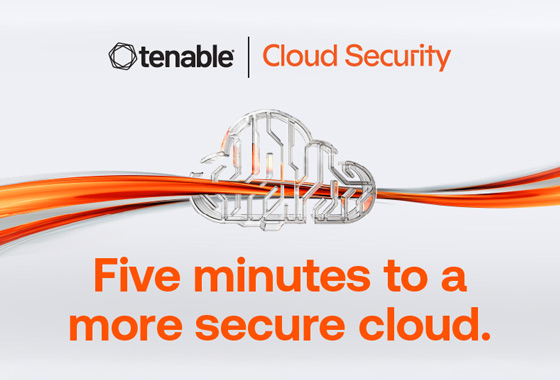
Stronger cloud security in five: The importance of cloud configuration security
Cloud misconfigurations are a major risk, but they’re preventable with the right strategies. Solutions like CNAPPs, CIEM, and CSPM can continuously monitor configurations, enforce least privilege and automate compliance across your cloud environments. Strengthening cloud security isn’t just about detection. It’s about proactive, continuous protection across the entire cloud.
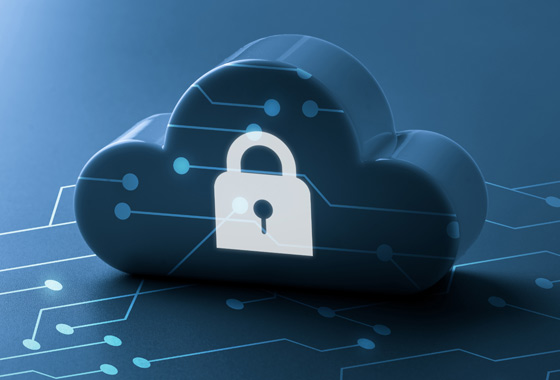
How to implement just-in-time access: Best practices and lessons learned
Just-in-time (JIT) access strengthens security by limiting user privileges to only what’s needed — when it’s needed. To successfully implement JIT, you need to automate access workflows, enforce least privilege and continuously monitor and audit usage. It’s about minimizing attack surfaces without slowing down operations.

Choosing the right cloud security provider: Five non-negotiables for protecting your cloud
Choosing the right cloud security provider means finding one that delivers full visibility, continuous monitoring and strong protection for cloud-native environments. Seamless integration with your existing tools and proven security expertise aren’t optional. They’re essential. To stay ahead of threats, you need a cloud security vendor that prioritizes proactive, end-to-end cloud security.
On-Demand-Webinare zum Thema Cloud-Sicherheit
Protect, comply, innovate: Your 2025 public sector cloud security survival guide
Tenable Cloud Security helps state, local and tribal agencies safeguard data and meet compliance requirements in an increasingly complex cloud environment. This on-demand webinar highlights strategies to close gaps in cloud security, overcome compliance challenges and achieve digital transformation.
Sehen Sie sich dieses On-Demand Webinar an, um mehr zu folgenden Punkten zu erfahren:
- Recognizing and closing gaps in cloud security tooling
- Practical strategies to handle resource constraints
- Real-world success stories from public sector organizations
Cloud security’s blind spot: Übersehen Sie den Faktor Identitäten?
Learn how cloud infrastructure entitlement management (CIEM) enhances your cloud security by offering visibility, reducing risk, and streamlining access management. This webinar will demonstrate how CIEM, as part of a unified CNAPP, can strengthen your organization’s data protection and compliance efforts.
Sehen Sie sich dieses On-Demand Webinar an, um mehr zu folgenden Punkten zu erfahren:
- Achieving deep multi-cloud visibility and continuous discovery
- Automating risk analysis and remediating excess permissions
- Enforcing compliance and least privilege access
Operationalizing security in your multi- and hybrid-cloud environment
Learn how easy it is to scale Tenable Cloud Security for continuous cloud security assessments and improvements. This on-demand webinar dives into the best practices for operationalizing security in multi- and hybrid-cloud environments.
Sehen Sie sich dieses On-Demand Webinar an, um mehr zu folgenden Punkten zu erfahren:
- Overcoming common cloud security operational challenges
- Tailoring Tenable’s deployment plan to your organization’s needs
- Demonstrating key Tenable Cloud Security capabilities
Tenable Cloud Security:Unified cloud security posture and vulnerability management
Comprehensive cloud visibility and exposure management in a single platform
Gain complete visibility
Assets und Expositionen in Hybrid Cloud-Umgebungen im Blick haben
Cost-effectively scale
Compliance, Remediation und Pipeline Governance automatisieren
Enforce security posture
Eliminate noise and prioritize remediation based on actual risk.
Tenable Cloud Security testen
Secure all of your cloud assets with Tenable Cloud Security
- Tenable Cloud Security
